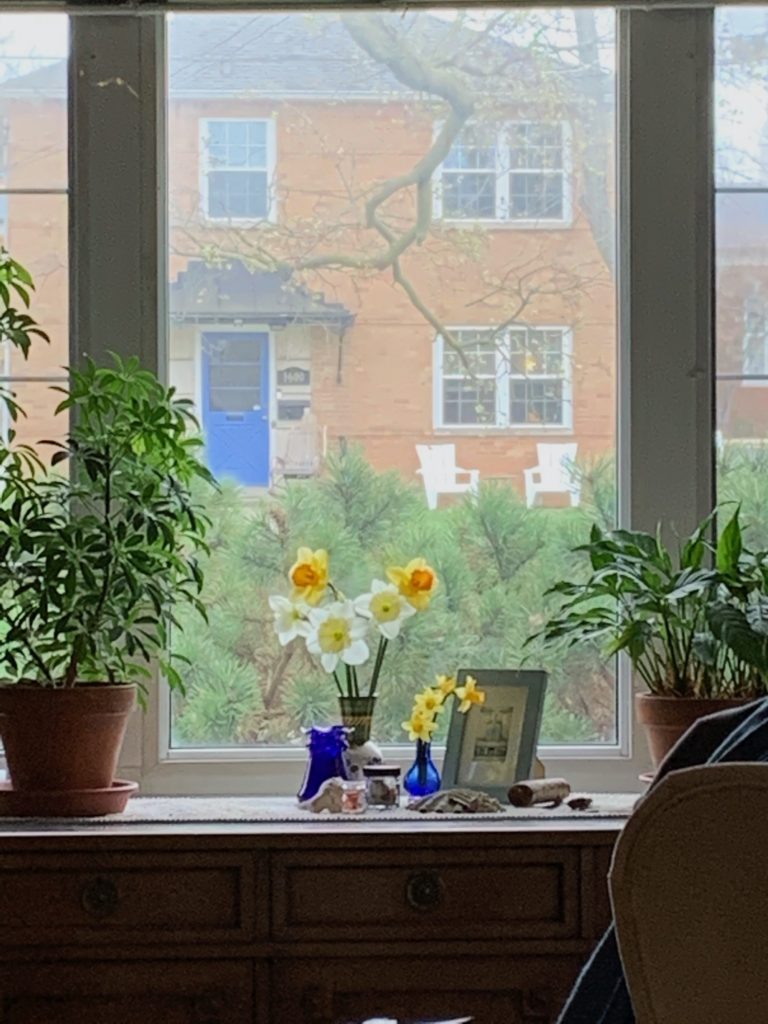
One spring morning, sitting at the table sipping tea, I saw green buds on tree branches hanging over the yard just outside the picture window. The small fists of summer, clenched tight, must have been there for a while, but I hadn’t noticed. Seemingly overnight, the greening buds had swelled and stretched up and out, ready to burst open.
“Tomorrow,” I thought, “maybe the branches will be covered with tiny, new leaves. Or do the green cases hold flowers?” After more than seventy springs, I’m embarrassed to admit, I didn’t know, not having watched trees closely enough. Either way, nature, frozen in place by winter’s cold and long darkness, was moving again in the warmth of spring sun. What other explanation is there for the sudden appearance of green buds?
Perhaps this one: There is no “sudden” in nature. As the Latin phrase goes, natura naturans —”nature naturing,” or to put it another way, nature doing what nature does. Buds don’t pop into existence overnight. They begin forming in the summer or early autumn when temperatures are still warm. Focused on trees’ lush green crowns or their glorious fall colors, we just don’t notice buds, but they are there. By the time we see them in winter, the buds are cloaked with heavy scales or fuzzy cases drawn tightly around them, like your warm woolen coat, pulled close to keep out the cold. And they wait.
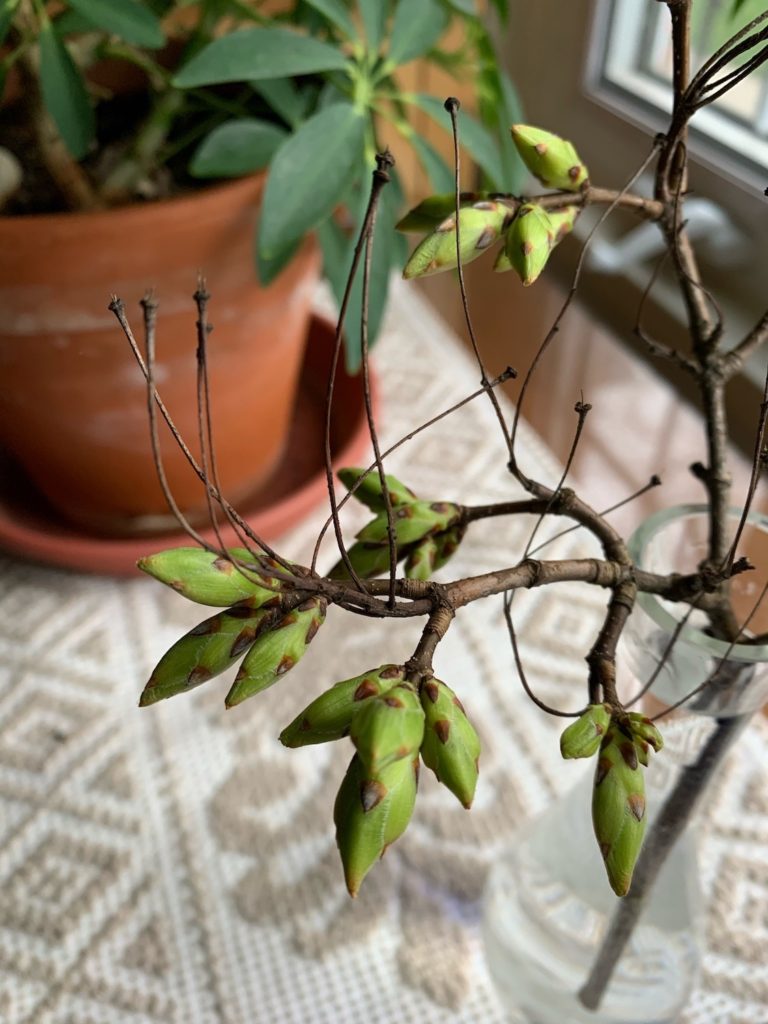
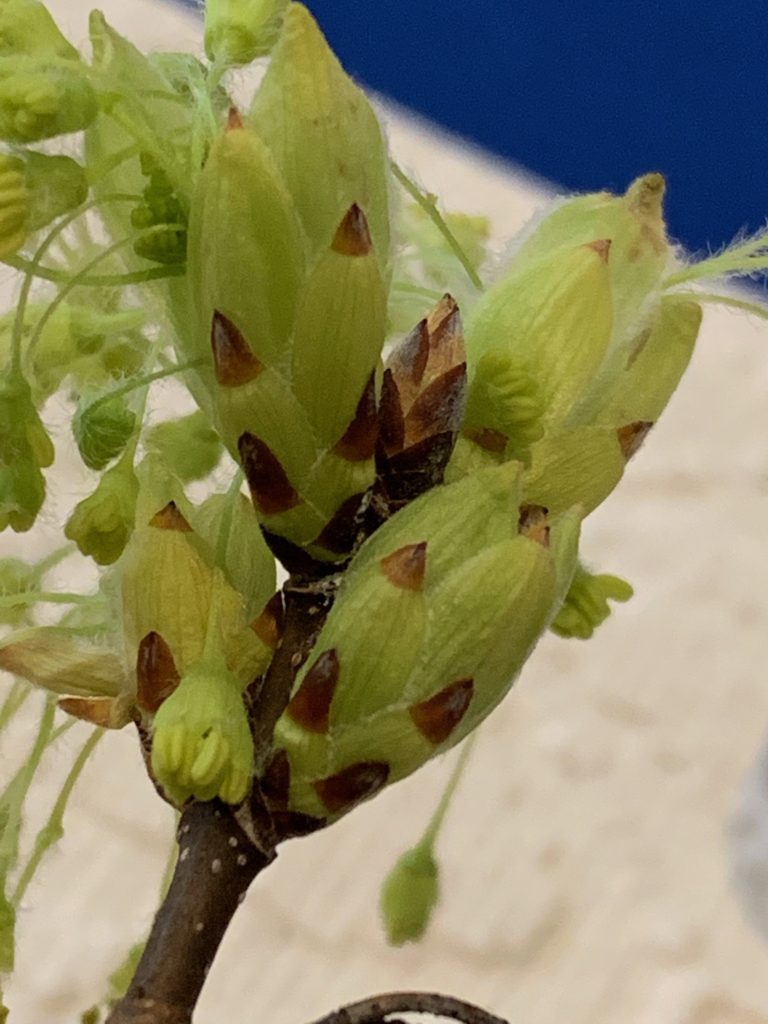
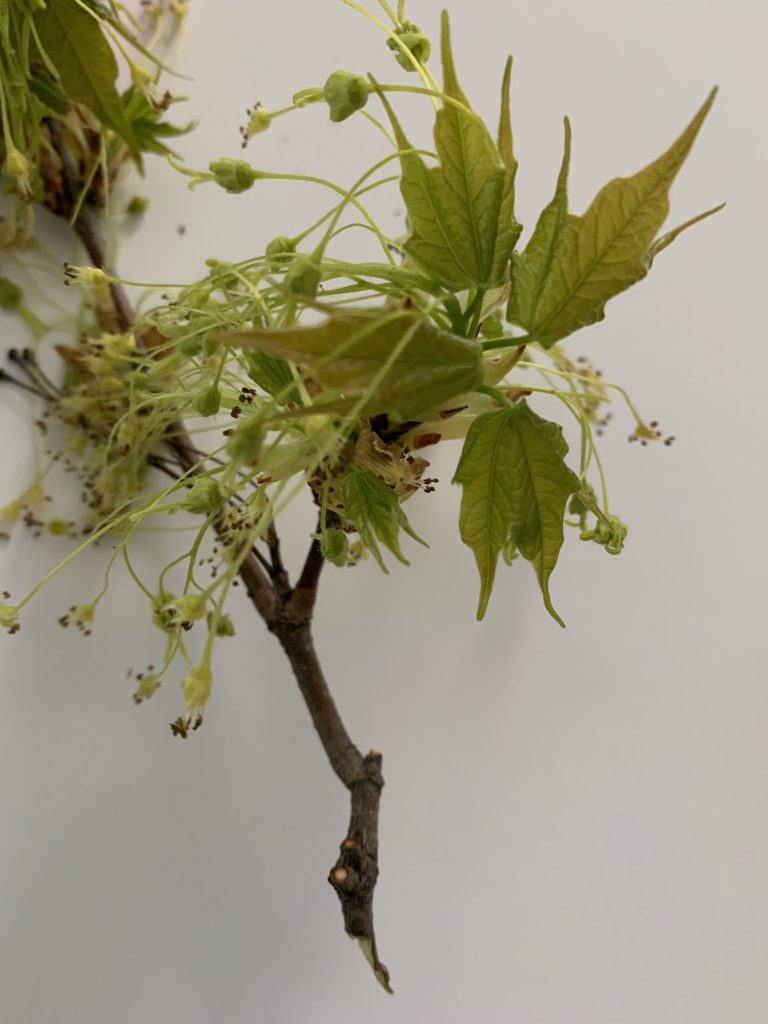
So, what was my maple doing all winter? “When cold weather hits, sap descends into roots, and when warm weather arrives, sap rises and feeds the tree,” I thought. Right?
True for most trees, but not for maples. These trees actually suck up the sap when temperatures drop, drawing liquid from the roots, and storing it in branches. A slow freeze with cold nights and warmer days sends sap up and down, up and down, storing more in the sapwood and preparing for a bountiful sap run. When winter hits in earnest, sap waits, frozen, before descending in spring and flowing out of holes if the tree has been tapped. (How this happens and why trees react differently to freeze and thaw is too complicated to explain here. Besides, I wouldn’t do a good job of it. But it’s fascinating and worth an internet search if you’re interested.)
In addition to affecting sap flow, cold winter temperatures send trees into a dormancy period allowing them to survive the harsh season and “wake up” in spring with the energy needed to blossom, resist pests, and develop fruit. When temperatures fluctuate too much from cold to warm during winter, tree buds may open prematurely; the tree may not be able to re-enter dormancy and might not have energy needed for growth.
Dormancy is important. For trees. For us.
The Word is living, being, spirit, all verdant greening, all creativity. This Word manifests itself in every creature.
Hildegard von Bingen
Sometimes our spirits need to rest. We can’t always be pushing forward, reading more books, attending more workshops, thinking, thinking, thinking. Greedily pulling in information like sap, to feed our hungry souls. Sometimes, what we need is rest. Holding what we already have in quiet. Openness – with no expectations.
Growth is a long process, so slow it often goes unnoticed, in trees and in our souls. Maple buds start forming sometime in the summer but need winter stillness before opening the following year. When warmth tells them it’s safe, they do what they are made to do: They break open. Leaves unfurl to feed the tree and flowers bloom and mature, producing fruit and seeds.
For us, the slow process is growing into who God made us to be. Saint Hildegard of Bingen (1098 – 1179) often used the word viriditas in her writings. It has been translated variously including “vitality,” “growth,” or “freshness.” She used it when writing about plants, healing, and also theologically as a metaphor for the Divine life of Christ that flows through all creation, including us, bringing healing and fruition. Viriditas knows no season; it’s a constant Presence within us. Whether in the quiet of winter or the exuberance of spring, God’s life is at work in our deepest center.
Hasn’t my soul known the same miracle as the buds? Suddenly feeling full of grace after a long winter? Hasn’t yours?
Further reading on St. Hildegard of Bingen, Doctor of the Church
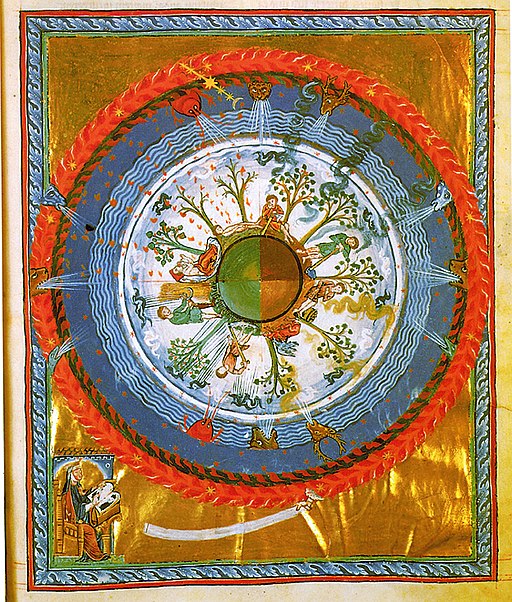
Public Domain Wikimedia Commons
The Life and Works of Hildegard von Bingen (1098-1179) Fordham University
St. Hildegard gives us a recipe for joy—even during a pandemic by Sonja Livingston in America
Hildegard of Bingen: no ordinary saint by Robdet McClory in the National Catholic Reporter
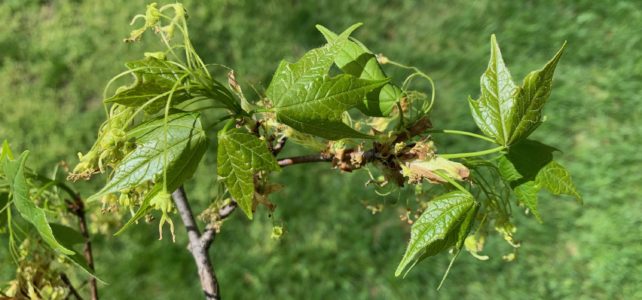
Good article, Mary. I think I’m like a tree..I’ve been dormant for over a year now.
I’m glad you enjoyed the article, Judy. It has been a long winter-like year for all of us. I’m hopeful this spring brings feelings of hope and allows some activity.
Love it. Reminds me of the Seed Song. Are you familiar with it? In case you are not here it is. By Joyce Rupp
The Seeed Song
I am the seed so small, so dry, lifted in the hand of the silent Sower. Into the earth I fearfully fall, darkenss ccovers me, silence surrounds me.
The terror of my heart is the only sound to keep me company. All that is me huddles together crying desperately not to surrender any part of self.
“Why was I planted?”I cry out. “Why am I here?” I entreat. “Take me into the light. I cannot bear this earthly dark.
I weary. I weaken. The days become long. I can no longer fight. I surrender in this lonely place of waiting..
Quietly I sense a penetrating warmth; it fills me and blesses my pain. In a moment of peacefulness I forget my fear.
I let go of myself and suddenly the husk that holds me weakens and breaks. “No,” I scream. I am losing myself, but it is too late. The husk is cracked. I cannot be
contained.
It is then that I sense a power deep inside me, encouraging me:”Let go. Let go.” It is an energy that pushes the husk until it falls away.
And it slips aside, my eyes behold color. Ah! Can it be? A tiny glimpse of green “How could that be?” I marvel. “There was never green in the heart of me.
Yet it is there ; each day it slowly stretches upwards to where the warmth seems to be. I become less of a seed. I am losing myself but the pain I once knew is lost in
surprise; something wondeful is greening and growing deep within my heart.
Days go quickly now. i become one with the small stem of life. Oh! The glorious moment when breath of Spring fast fills my face. I move through the hard earth and
taste the world, which awaits my arrival.
From within my tender shoot comes a soft sound. I lisaten. I hear. It is a song to the Sower: O Sower of seeds, did you always see this gift of green that was hiding in
me?
O Sower of seeds, how come you prize the beauty withIn that I hid from my eyes? O Sower of seeds, the husk has been broken :All praise to you for helping me open.
Accept now my praise, my thankfulness too, for the seed you have sown and the gift that you grew. May you lead me to others who await your good word, so the seeds within them can awake and be heard.. Amen Alleluia
I’m glad you liked the column, Ann. Thank you for sharing this lovely poem by Joyce Rupp. It can be found in her book, Fresh Bread. It’s always good to hear from you.